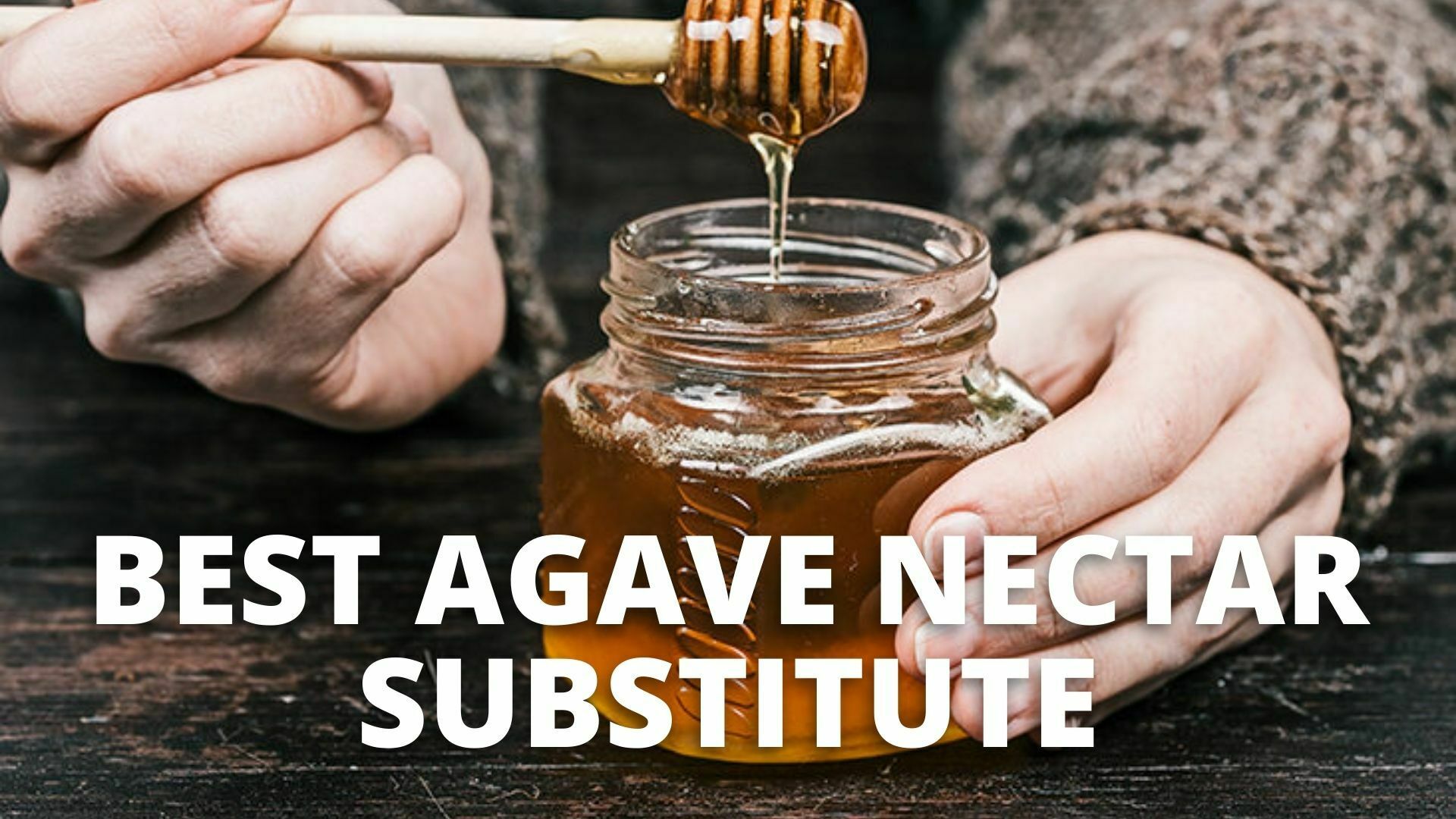Agave nectar, a common liquid sweetener, has a neutral taste but a high sugar content. In recent years, it has gained popularity as a healthier, more diabetes-friendly alternative to refined sugar.
In the event that you are unable to or choose not to consume agave nectar, you will need to find an acceptable substitutes for Agave Nectar.
If you don’t have it on hand, we’ve compiled a list of the best replacements so you can continue cooking.
Okay, so let’s begin.
What Is Agave Nectar?
This sweetener comes in liquid form and may be made from any one of many different agave plants.
When the plants reach maturity, after 7 to 14 years, the leaves are removed and the juice is extracted from the stems and roots.
Once the juice has been extracted, it is filtered, boiled, and concentrated.
South Africa and Mexico are the most common locations for these plants’ natural habitats. Although it looks and tastes quite similar to honey, its consistency is significantly less thick.
A variety of names, including “agave syrup” and “maguey syrup,” relate to this sweetener.
Due to its low glycemic index (GI), agave nectar is a superior sugar alternative for diabetics.
But it’s around 30% sweeter than table sugar, so you can use less of it without sacrificing taste.
Why Substitute Agave?
It’s probable that you’ve come across agave nectar in your search for vegan-friendly sweeteners (agave syrup).
Although its beginnings are plants, by the time you receive commercial agave in liquid form, it has been heavily treated (ultra-processed, if you will) (ultra-processed, if you will). Agave processing removes the majority of its minerals and health advantages.
And while agave scores lower on the Glycemic Index than conventional sugar (approximately half), it is heavy in fructose which drives the liver into overdrive anytime you consume it.
Fortunately, there is good news. When looking for a safe and all-natural sweetener, you have various options that come from plants. There are ways to curb your sweet appetite while reducing your sugar consumption.
This is not an all-inclusive list, but it is meant to get you thinking about potential substitutes to agave that are both liquid and granular.
Best Substitutes For Agave Nectar
Honey
First, we use honey, a highly nutritious option that may stand in for agave nectar and is widely available all over the globe.
It goes well with salty meals and may also be used as a natural sweetener.
To replace agave nectar in marinades, sauces, marinade sauces, and other recipes, use honey.
Since honey is thicker than agave nectar, you’ll need to use one cup of honey for every cup of agave nectar.
Maple Syrup
Many people choose using natural plant-based sweeteners like maple syrup or agave nectar. Agave nectar is also derived from plant sap, although in this case it is different from maple syrup, which is derived from the sap of maple trees.
Both sugar substitutes have the same amount of sugar but have very different flavors and consistencies. Compared to agave nectar, maple syrup has a thicker viscosity and a more robust taste.
Keep this in mind while looking for a maple syrup agave nectar replacement. Replace each tablespoon of agave nectar with three-quarters of a spoonful of maple syrup.
Having the correct amount of sweetness and texture in your dish will be a breeze with this trick.
Simple Syrup
Those who find themselves without simple syrup at home may easily make their own using only granulated sugar, water, and a few other ingredients.
The fact that most people already have sugar in their kitchens makes it a fantastic agave syrup substitute, and the fact that vegans cannot consume honey makes it a perfect choice for those who follow that diet.
Simple syrup may replace agave nectar in any dish, although it is most often used to sweeten cocktails and other beverages.
This is because agave nectar is thicker and more viscous than simple syrup. Therefore, the difference won’t be as apparent in a beverage as it would be in a dish.
If you’re out of simple syrup and want to create some, here’s how:
- Mix equal portions of granulated sugar and water.
- Put the concoction into a pot and cook it over medium.
- Don’t worry about bringing the mixture to a boil; just wait for the ingredients to dissolve, and then set them aside to cool.
- Pour the mixture into a glass jar and keep it in your fridge.
It is recommended that simple syrup be used in place of agave nectar in mixed beverages at a 1:1 ratio. Your simple syrup has a shelf life of around a month, so stock up on agave nectar recipes in that time.
Brown Rice Syrup
Brown rice syrup (also known as rice malt syrup) is a delicious substitute for agave nectar in the kitchen. It has a higher glycemic index (GI) than agave but is still far healthier than table sugar or honey.
Use this alternative in any recipe that calls for agave. A splash of it enhances the flavor of smoothies, baked goods, and hot drinks.
Brown rice syrup is not the ideal choice if you want your cuisine to taste as sweet as possible since it is significantly less sweet than agave.
Alternatively, you may double the brown rice syrup for a comparable degree of sweetness.
The ratios in your cooking may be off because of the extra liquid, so be cautious.
Corn Syrup
Most sugars, including agave, tend to crystallize when used in confections like fudge, pralines, and taffee.
This is when undesirable crystal solids form in your sweet sugar syrup without notice.
Corn syrup is a fantastic solution if you’re experiencing this issue. It functions as an interferent during boiling, enhancing the quality of the end result.
Use a 1:1 ratio of white sugar and corn syrup to produce ideal candy delights.
Advice: heating combinations to the precise temperature is essential for better candy production.
Brown Sugar
Use Brown Sugar if you aren’t happy with the glycemic index, calorie count, or anything else related to your diet at the moment.
This is an all-rounder, minimal-effort option used in dressings, sauces, heating, and cold or hot drinks.
To offset the milder sweetness of Agave Nectar in recipes, use 1/3 cup of brown sugar.
Blend in a half cup of liquid, whether it’s water, milk, oil, or whatever else works with the dish you’re making.
You probably already have this on hand, and it can be used instead of Agave Nectar in any recipe that calls for it.
Brown Sugar is similar to granulated White Sugar in terms of how it’s used, but it has a little more flavorful, roasted, and natural sweetness. To restore the lost fluid, just add water.
Rice Syrup
You may know this product by the names brown rice malt, brown rice syrup, or rice malt. It is created from brown rice and originated from China.
To make the sugary syrup, brown rice is subjected to an enzymatic process before being thickened.
Since it contains more glucose and less fructose, many people believe it to be healthier than other sweeteners.
That being said, it has a high GI and approximately doubles the calories contained in similar amounts of white sugar.
In order to get the same level of sweetness as agave nectar, you may need to use up to twice as much rice syrup as you would agave nectar.
How To Substitute: People are increasingly substituting rice syrup for agave nectar. It is a simple and healthier option yet with a unique taste. The greatest part is that it won’t alter the taste of your food at all, and you only need roughly twice as much of it as you would agave nectar to get the same degree of sweetness.
Conclusion
Honey, maple syrup, or a simple syrup are suitable alternatives to agave nectar in most cooking situations. Although simple syrup has a higher glycemic index, it is a convenient substitute for agave in drinks.
If the GI of sugar isn’t on your radar then this substitute will do the task beautifully.
When substituting a different sweetener in a recipe, you will likely also need to adjust the liquid content, so you may need to experiment about with the proportions.
Although we did our best to offer some ballpark figures, there are no “hard and fast” rules here and some trial and error with numbers will be necessary.
What would you recommend replacing agave nectar with, if anything? If you have a theory, post it in the comments so we can try it out.





